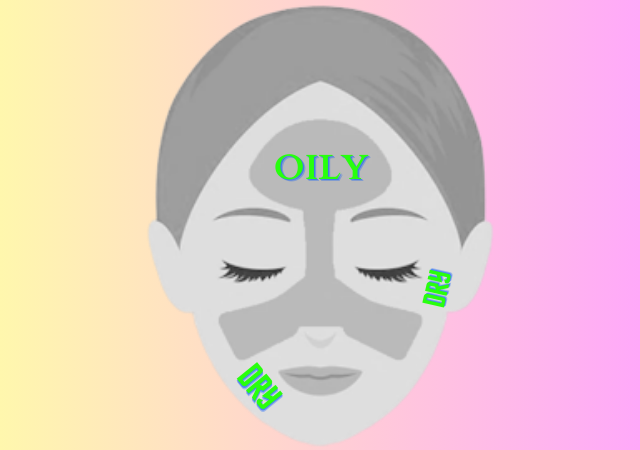Is it Possible to Have Both Oily Skin and Dry Skin at the Same Time?
Introduction
The world of skincare is complex, with an array of skin types and conditions, each demanding unique attention and care. Among the myriad mysteries that our skin presents, one intriguing question often arises: Can an individual have both oily skin and dry skin concurrently? It seems paradoxical – the greasy shine of excessive sebum production coexisting with the uncomfortable tightness of dryness. However, the answer is not as straightforward as it may seem.
In this article, we will embark on a journey to unravel the enigma of dual skin types. We’ll explore the characteristics of oily and dry skin, the factors contributing to their manifestation, and the elusive concept of combination skin. Understanding this complexity is essential for tailored skincare regimens and achieving a balanced, healthy complexion. So, let’s dive into the world of skin, where mysteries await revelation.
Understanding Oily Skin

Before delving into the possibility of having both oily and dry skin, it’s crucial to understand the individual characteristics of these skin types.
Characteristics of Oily Skin:
- Excess Sebum Production: Oily skin is characterized by an overproduction of sebum, the skin’s natural oil. This excess oil can lead to a shiny, greasy appearance, especially in the T-zone – the forehead, nose, and chin.
- Enlarged Pores: Oily skin often accompanies enlarged pores, making them more noticeable. These enlarged pores can also be more prone to clogging, leading to blackheads and acne.
- Prone to Acne: The excess sebum can create a breeding ground for acne-causing bacteria, resulting in frequent breakouts and blemishes.
Causes of Oily Skin:
- Genetics: Oily skin can be inherited. If your parents or grandparents had oily skin, you’re more likely to have it as well.
- Hormonal Imbalance: Hormonal fluctuations, especially during adolescence and menstruation, can trigger an increase in sebum production.
- Environmental Factors: Humid weather and exposure to pollutants can exacerbate oily skin.
Understanding Dry Skin

Characteristics of Dry Skin:
- Flakiness and Tightness: Dry skin lacks proper hydration, leading to a dry, tight feeling. It may also develop flakiness and redness.
- Redness and Irritation: Dry skin is more susceptible to redness, irritation, and even itching. It can feel uncomfortable and sensitive.
- Prone to Fine Lines: Dehydrated skin is more likely to develop fine lines and wrinkles, making it look prematurely aged.
Causes of Dry Skin:
- Genetics: Just as with oily skin, genetics play a role in determining your skin type. If your family has a history of dry skin, you might as well.
- Weather and Climate: Harsh weather conditions, low humidity, and cold winds can strip the skin of its natural oils, leading to dryness.
- Skincare Habits: The use of harsh skincare products, like excessive exfoliation or astringents, can exacerbate dryness.
The Duality of Combination Skin
Now, let’s address the question: Is it possible to have both oily and dry skin at the same time? The answer lies in a skin type known as combination skin.
Definition of Combination Skin:

Combination skin is a unique blend of different skin types. It typically involves having an oily T-zone, which includes the forehead, nose, and chin, and dry or normal skin on the cheeks and other areas. In other words, combination skin is the coexistence of both oily and dry (or normal) skin on the same face.
Characteristics of Combination Skin:
- Oily T-Zone: The T-zone in combination skin is oily, with enlarged pores and a tendency for breakouts.
- Dry Cheeks: The cheek area can be dry or normal, sometimes experiencing redness and tightness.
Factors Contributing to Combination Skin:
- Genetics: Genetics can play a role in combination skin. If your family has a history of combination skin, you may be more predisposed to it.
- Hormonal Changes: Hormonal fluctuations can influence the development of combination skin. For example, some individuals may experience more oiliness during puberty and acne-related hormonal changes, while their cheeks may remain dry.
- Skincare Products: The use of inappropriate skincare products can also result in combination skin. For instance, harsh cleansers or acne treatments on the T-zone can exacerbate oiliness, while moisturizing products on the cheeks can help alleviate dryness.
Diagnosis and Skincare
Now that we understand the concept of combination skin, how can you determine if you have it, and what’s the best way to care for it?
How to Determine Your Skin Type:

The easiest way to determine your skin type is through the “barefaced” test. Start with clean skin and let it air-dry without applying any products. After an hour, observe how your skin feels and looks.
- Oily Skin: If your skin appears shiny, especially in the T-zone, and feels slightly greasy, you likely have oily skin.
- Dry Skin: If your skin feels tight, looks flaky or red, and is uncomfortable, you likely have dry skin.
- Combination Skin: If your T-zone is oily, and your cheeks are dry or normal, you likely have combination skin.
Tailoring Skincare to Combination Skin:
Creating a skincare routine that caters to combination skin requires balance. Here are some essential tips:
- Cleansing: Use a gentle cleanser to remove excess oil and impurities in the T-zone, but avoid over-cleansing the cheeks.
- Moisturizing: Apply a lightweight, oil-free moisturizer on the T-zone and a richer, hydrating moisturizer on the cheeks.
- Sun Protection: Use a broad-spectrum sunscreen daily to protect your skin from harmful UV rays. Look for products suitable for combination skin.
- Treating Breakouts and Dry Patches: For breakouts, consider spot treatment products containing salicylic acid or benzoyl peroxide for the T-zone. For dry patches on the cheeks, apply a hydrating serum or cream.
- Common Mistakes to Avoid: Avoid using harsh exfoliants on the T-zone, as this can exacerbate oiliness. Likewise, avoid over-moisturizing the T-zone, as it can lead to clogged pores.
Lifestyle and Diet Considerations
While skincare plays a significant role in managing combination skin, lifestyle and diet factors should not be overlooked.
The Role of Diet in Skin Health:
A well-balanced diet rich in vitamins, minerals, and antioxidants can contribute to overall skin health. Drinking plenty of water helps keep the skin hydrated. Foods like fruits, vegetables, and fatty fish can provide essential nutrients for skin health.
Stress and Its Impact on Combination Skin:
Stress can trigger hormonal imbalances, which may exacerbate the oiliness in the T-zone. Managing stress through techniques like yoga, meditation, or deep breathing exercises can help maintain skin balance.
Hydration and Its Significance:
Staying well-hydrated is crucial for all skin types, but especially for combination skin. Drinking enough water helps maintain skin’s moisture balance, preventing dryness and oiliness.
Consultation with a Dermatologist

While a personalized skincare routine can be effective for managing combination skin, there may be instances where consulting a dermatologist is necessary.
When to Seek Professional Help:
- If your combination skin is causing persistent discomfort, such as severe acne or chronic dryness, consult a dermatologist.
- If over-the-counter products are not effectively managing your skin, a dermatologist can provide tailored solutions.
Dermatological Treatments and Procedures:
Dermatologists can recommend treatments and procedures such as chemical peels, microdermabrasion, or prescription medications to address the specific needs of your combination skin.
Conclusion
In the world of skincare, the possibility of having both oily and dry skin at the same time is not only feasible but quite common, thanks to the intricate interplay of genetics, hormones, and skincare habits. Understanding combination skin and tailoring your skincare routine accordingly is key to maintaining a balanced and healthy complexion.
Embracing your skin type, whether it’s oily, dry, or a combination of both, is the first step to achieving the radiant, beautiful skin you deserve. Remember, there is no one-size-fits-all solution in skincare. Listen to your skin, adapt your routine, and consult with a dermatologist when needed to unlock the secret to your best skin.

My name is Rohit Vagh and I’m a content writer specializing in fashion and lifestyle. I have three years of experience in this field and have written various articles. My writing style is creative and engaging, and I strive to create content that resonates with my readers. I have a deep passion for fashion and am constantly researching the latest trends and styles to make sure my readers are up to date. I’m excited to continue my career in blogging, and I’m always looking for new opportunities in the fashion and lifestyle space.





